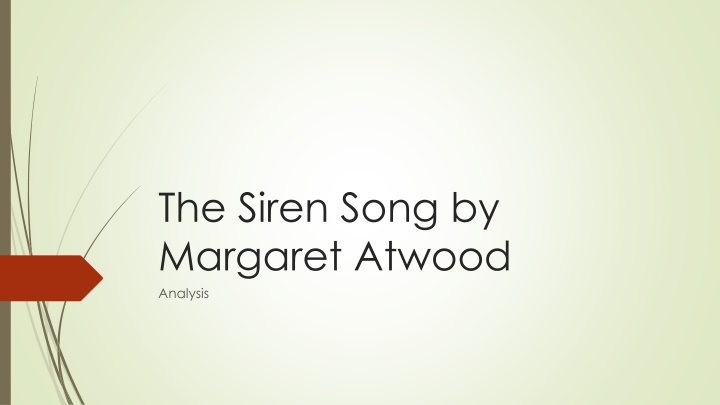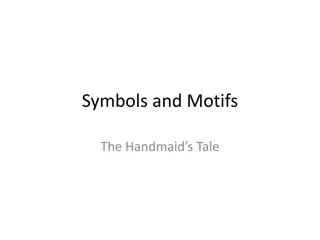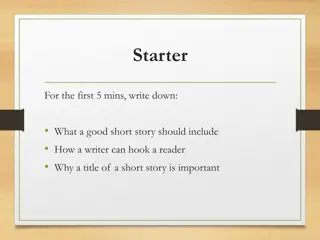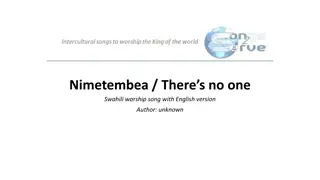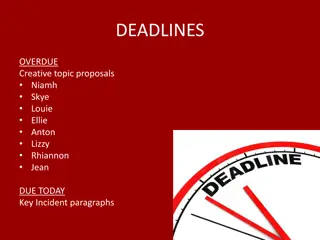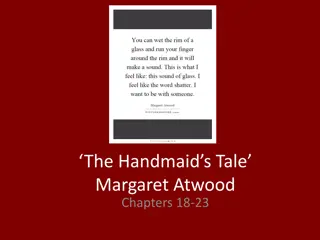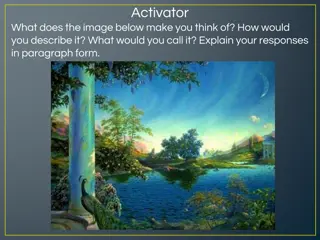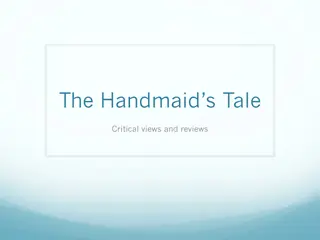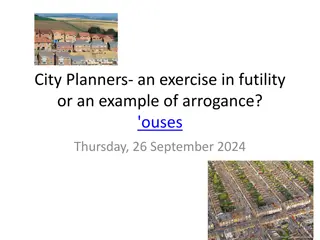Margaret Atwood's Analysis of "The Siren Song
Margaret Atwood, a renowned Canadian author, delves into the plight of humans through speculative fiction with elements of dystopia and science-fiction. She is an environmentalist who addresses issues like global warming in her works. Atwood's writing style includes free verse poetry with enjambment, playing with language to convey multiple meanings. "The Siren Song" explores the seductive yet perilous nature of sirens, drawing parallels to allure and danger in Greek mythology.
Download Presentation

Please find below an Image/Link to download the presentation.
The content on the website is provided AS IS for your information and personal use only. It may not be sold, licensed, or shared on other websites without obtaining consent from the author.If you encounter any issues during the download, it is possible that the publisher has removed the file from their server.
You are allowed to download the files provided on this website for personal or commercial use, subject to the condition that they are used lawfully. All files are the property of their respective owners.
The content on the website is provided AS IS for your information and personal use only. It may not be sold, licensed, or shared on other websites without obtaining consent from the author.
E N D
Presentation Transcript
The Siren Song by Margaret Atwood Analysis
Who is Margaret Atwood? Well-known Canadian author Has written 40+ books of various types (novels, poetry anthologies, and essays, children s books, etc.) Some of her works have recently been turned into TV Mini-series such as The Handmaid s Tale and Alias Grace Born on November 18th, 1939 in Otttawa Lived in Ontario and Quebec for most of her childhood/adolescence Taught at UBC from 1964-1965 Has taught at many other Canadian and US Universities and continues to be a guest lecturer at many schools
Genres Delves into the plight of humans quite vigorously Fiction tends to be dystopic and has elements of science-fiction She prefers to call her genre speculative fiction Environmentalist and cares deeply about global warming, overconsumption, etc., and these issues are addressed in her writing Feminist, but does not identify herself as such (she doesn t like labels) Many of her works are based on adaptations of myths or other works Hagseed, which is one of her most recent novels, is based on Shakespeare s The Tempest Often writes poetry in free verse, and plays with language by using elements such as enjambment (and punctuation (or lack thereof) to convey multiple meanings
Enjambment refers to a line in a poem that continues into the following line without any punctuation This often is used for effect such as to give a run-on feel (sometimes a stream of consciousness type thought process), or to emphasize or draw attention to specific diction (words).
The Siren Song Read the poem out loud in your small groups Then, read the poem to yourself a second time Once finished, discuss your initial impressions of the poem Then, go through the poem stanza by stanza to first identify literal meaning, and then figurative meaning
Title What is a siren? In Greek mythology, a siren is a winged creature whose singing lured unwary sailors onto the rocks A siren also refers to something although alluring, that is quite dangerous or has the potential to cause harm
Form and purpose Free verse Written in tercets (3 line stanzas) There are 9 tercets and the poem is 27 lines Social commentary poem that has elements of light verse (mocking victims and the audience)
Paraphrase (literal meaning) The poem is about a mischievous siren that lures many to their death through her song
Connotation (figurative, symbolic meaning) Despite the warnings, many flock to this mythological creature when she beckons them She plays the victim and these sailors are enticed by the fact that she is a damsel in distress and want to save her By playing the victim, she empowers herself to get what she wants, to trick these men into following her to their demise
Point of view First person Use of second person to directly address those she wishes to fool Speaking to the audience is powerful only you, only you can/you are unique (stanza 8) Manipulative and cunning
Symbolism: death imagery Song is so powerful, few or no one can resist it causing them to leap overboard beached skulls (stanza 2) and all of stanza 3 danger is clearly illustrated, and death is imminent Lose ability to use logic and reason People can easily be manipulated by someone or something attractive such as learning a secret
Symbolism: stereotypical view of women being beautiful and powerless looking picturesque and mythical (stanza 5) this song is a cry for help (stanza 7) Weakness plays into manipulation A big, strong man can save the day Turns the tables by using this to fool men
Repetition Use of repetition throughout creates urgency and shows neediness of the siren who is being held at her will by two feathery maniacs
Limited use of punctuation and enjambment Creates a run-on feel The physical lines run one into the next, changing meaning depending how you read the words at the end and beginning of each line will you get me/out of this bird suit (stanza 4) (will you get me a challenge will you be able to help me?) I don t enjoy it here/squatting on this island (stanza 5) (here squatting on this island descriptive, not necessarily trapped or being held against her will)
Mood (feeling you get) and tone (attitude of the speaker/author) Mood: negative: desperate, hopeless, Tone: sarcastic, cunning, confident, manipulative
Title revisited: The Siren Song Warning Alarm Don t heed warning and don t exercise caution Let guard down despite the warning signals that are in plain view
Theme Stereotypes may obscure one s judgment The innate desire to be the hero may lead to victimization Appearances may be deceptive Being susceptible to flattery may result in being deceived
Works Cited http://margaretatwood.ca/biography/ A great deal of content is from knowledge acquired about her through reading and interpretation of her works over the years Some information comes from having heard Atwood speak at The Vancouver Writer s Festival in 2017
